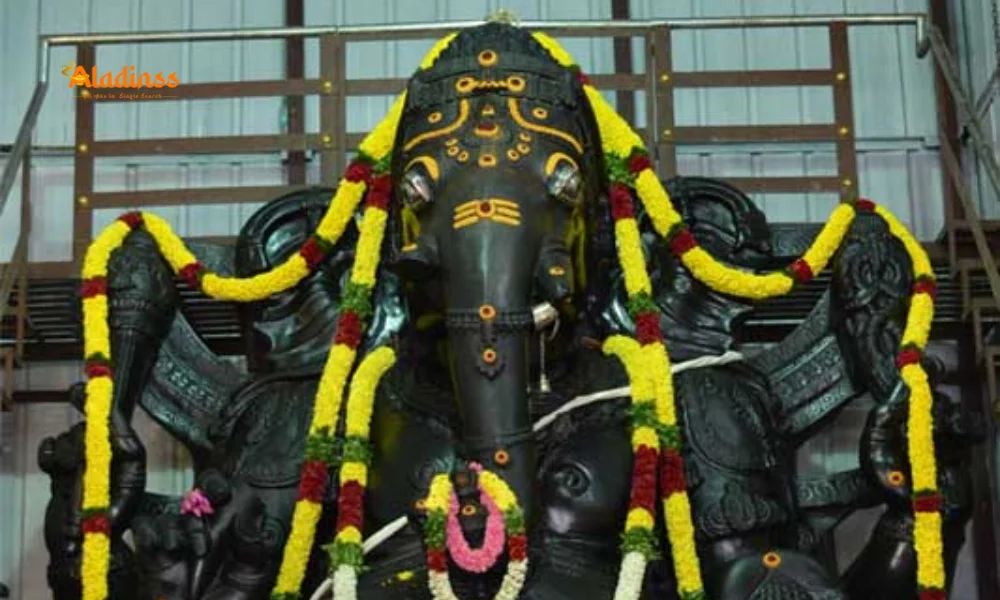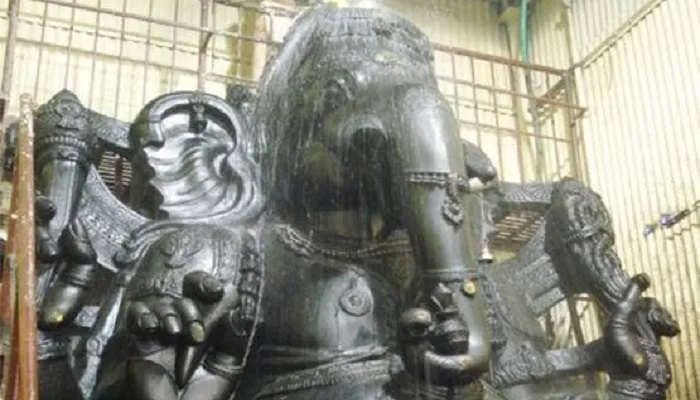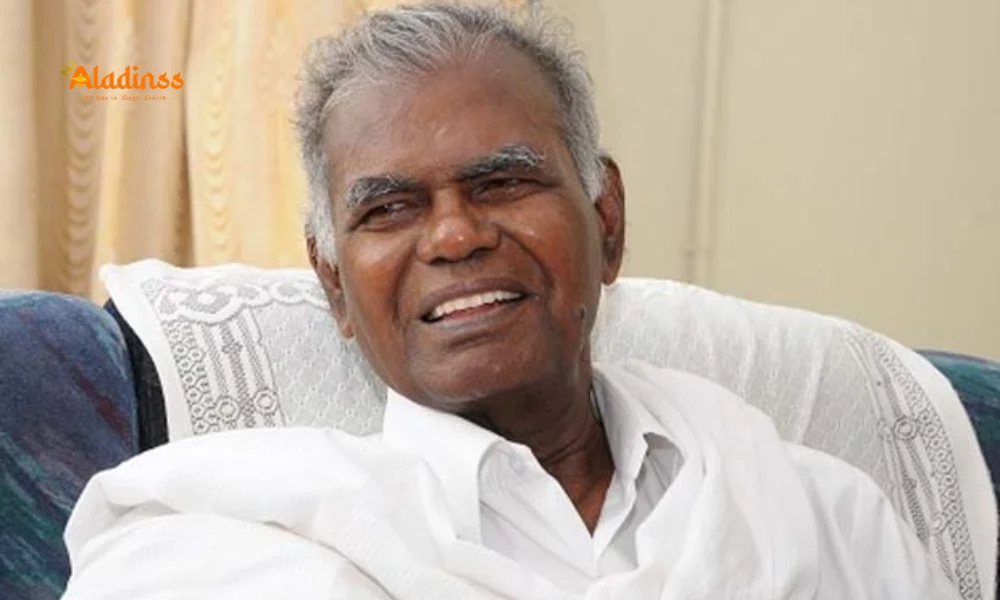Asia’s Largest Ganesha Statue Shines in Coimbatore for Vinayaka Chaturthi 2025

Asia’s Largest Ganesha Statue Shines in Coimbatore for Vinayaka Chaturthi 2025
Coimbatore, Tamil Nadu, became the epicenter of spiritual fervor on August 27, 2025, as thousands of devotees flocked to the Puliyakulam Arulmigu Sri Mundhi Vinayagar Temple to celebrate Vinayaka Chaturthi. The temple, home to Asia’s largest Ganesha statue, measuring an awe-inspiring 19 feet 10 inches in height and 10 feet 10 inches in width, was adorned with an extravagant 4 tons of flowers, creating a royal spectacle for Lord Ganesha. Special pujas, including a grand Maha Abhishekam and Ganapathi Homam, marked the occasion, drawing devotees in large numbers to offer heartfelt prayers. This vibrant celebration, steeped in tradition and devotion, has placed Coimbatore at the forefront of Vinayaka Chaturthi festivities, making it a trending topic across India and beyond.

The Majestic Puliyakulam Ganesha Statue
The Puliyakulam Arulmigu Sri Mundhi Vinayagar Temple, located in the heart of Coimbatore, is renowned for housing Asia’s largest Ganesha statue, a monolithic marvel carved from a single stone and installed on January 25, 1998. Standing at nearly 20 feet tall, this iconic idol is a symbol of divine grandeur, attracting devotees from across India and the global Hindu diaspora. The statue’s imposing presence, combined with its intricate craftsmanship, makes it a focal point of worship during Vinayaka Chaturthi, also known as Ganesh Chaturthi, a festival celebrating the birth of Lord Ganesha, the remover of obstacles and god of wisdom.
On August 27, 2025, the temple was transformed into a vibrant spectacle as the Ganesha idol was adorned with 4 tons of fresh flowers, including marigolds, roses, jasmine, and hibiscus, creating a breathtaking floral canopy. The elaborate decoration, a hallmark of the festival, reflected the devotion and artistry of the temple’s organizers and devotees. The floral arrangement, paired with traditional offerings like modaks, kozhukattai, adhirasam, murukku, and laddus, underscored the cultural richness of the celebrations, drawing thousands to witness the divine splendor.
Special Pujas and Rituals
The Vinayaka Chaturthi celebrations at Puliyakulam Temple began early on August 27, 2025, with Shivacharyas conducting the Veda Mantra Mulanga Yagya Velli, a sacred ritual invoking divine blessings. A highlight of the day was the Maha Abhishekam, a ceremonial bathing of the Ganesha idol with 16 types of sacred substances, including Panchamirtham (a mixture of fruits and honey), milk, curd, turmeric, sandalwood, elanik, paneer, and holy water from the Yagya Salai. This ritual, rooted in the Shodashopachara tradition, symbolizes purification and devotion, creating a spiritually charged atmosphere for worshippers.
Following the abhishekam, the idol was meticulously decorated with 4 tons of vibrant flowers, transforming it into a vision of divine beauty. The Maha Deeparathan, a grand aarti ceremony, followed, accompanied by the chanting of Vedic hymns and the Ganapati Atharvashirsa. Devotees offered traditional sweets, believed to be Lord Ganesha’s favorites, enhancing the festive spirit. The rituals, performed with precision and reverence, underscored the temple’s significance as a spiritual hub, with thousands participating in the prayers and seeking blessings for prosperity and success.
Devotee Participation and Crowd Management
The Puliyakulam Temple saw an unprecedented turnout on August 27, 2025, with thousands of devotees forming long queues to have darshan of Asia’s largest Ganesha statue. The atmosphere was filled with devotion as worshippers, young and old, offered prayers with folded hands, seeking Lord Ganesha’s blessings for new beginnings and the removal of obstacles. To manage the massive crowd, Coimbatore police set up temporary barricades, ensuring a smooth and orderly darshan process. The authorities’ efforts were commended on social media, with devotees praising the seamless arrangements despite the large turnout.
Similar scenes unfolded at the Itchanari Vinayagar Temple, another prominent Ganesha shrine in Coimbatore, where thousands gathered for darshan. A special Ganapathi Homam was performed, followed by 16 types of abhishekam, mirroring the rituals at Puliyakulam. The temple’s vibrant decorations, featuring floral garlands and traditional motifs, added to the festive ambiance. Across Coimbatore, various Hindu organizations set up temporary Ganesha idols at public spaces, allowing devotees to participate in community worship and further amplifying the city’s festive spirit.
Cultural and Spiritual Significance
Vinayaka Chaturthi, celebrated on the fourth day of the Hindu month of Bhadrapada, marks the birth of Lord Ganesha, revered as the god of wisdom, prosperity, and new beginnings. In Tamil Nadu, the festival, also known as Pillayar Chaturthi, is observed with immense devotion, with temples and homes adorned with eco-friendly idols made of clay or organic materials, aligning with state regulations banning plaster-of-Paris idols due to environmental concerns. The Puliyakulam Temple’s celebrations exemplify this tradition, blending grandeur with sustainability, as the floral decorations used biodegradable materials, reflecting a growing emphasis on eco-friendly festivities.
The festival’s significance extends beyond religious observance, fostering community unity and cultural pride. In Coimbatore, the elaborate rituals and vibrant decorations at temples like Puliyakulam and Itchanari highlight the city’s deep-rooted connection to Hindu traditions. Devotees believe that worshipping Lord Ganesha during Vinayaka Chaturthi removes obstacles and brings success, making it a time for personal reflection and collective celebration. The use of 4 tons of flowers at Puliyakulam, sourced from local markets, also supports regional farmers, adding an economic dimension to the festivities.
Eco-Friendly Celebrations and Community Impact
In line with Tamil Nadu’s environmental regulations, the Puliyakulam Temple and other Vinayagar shrines in Coimbatore emphasized eco-friendly practices during Vinayaka Chaturthi 2025. The use of natural flowers, biodegradable decorations, and clay idols reflects a broader shift toward sustainable celebrations, a trend gaining traction across India. Devotees were encouraged to immerse idols in designated tanks or at home, minimizing water pollution, a practice promoted by the Tamil Nadu Pollution Control Board. Social media posts praised the temple’s efforts, with hashtags like #EcoFriendlyGanesha and #VinayakaChaturthi2025 trending on X.
The festival also had a significant community impact, with local businesses, including flower vendors and sweet shops, reporting a surge in demand. The 4 tons of flowers used at Puliyakulam were sourced from Coimbatore’s bustling flower markets, providing a boost to local farmers and traders. Community organizations and youth groups participated in setting up pandals and organizing cultural programs, including bhajans and dance performances, fostering a sense of unity. The celebrations highlighted Coimbatore’s role as a cultural hub, with its temples serving as focal points for spiritual and social gatherings.
Nationwide Resonance and Global Appeal
While Coimbatore’s Puliyakulam Temple stole the spotlight with its grand celebrations, Vinayaka Chaturthi 2025 was observed with equal enthusiasm across India. From Mumbai’s iconic Lalbaugcha Raja to Hyderabad’s eco-friendly clay idol initiatives, the festival united millions in devotion to Lord Ganesha. In Tamil Nadu, temples like the Varasidhi Vinayaka Swamy Temple in Kanipakam, Andhra Pradesh, also hosted elaborate rituals, with 21-day brahmotsavams starting on Chaturthi day. The global Hindu diaspora, including communities in the US, Canada, and Singapore, joined the festivities, with temples adorned with flowers and hosting virtual aartis for devotees abroad.
The grandeur of Coimbatore’s celebrations, particularly the floral decoration of Asia’s largest Ganesha statue, garnered international attention, with media outlets and social media influencers sharing images of the floral spectacle. The temple’s commitment to blending tradition with sustainability resonated with younger generations, who took to platforms like X to share their experiences. One user wrote, “The 4-ton flower decoration at Puliyakulam is a sight to behold! Ganpati Bappa Morya!” The global appeal of the festival underscores Lord Ganesha’s universal significance as a symbol of wisdom and prosperity.
Comment / Reply From
No comments yet. Be the first to comment!











